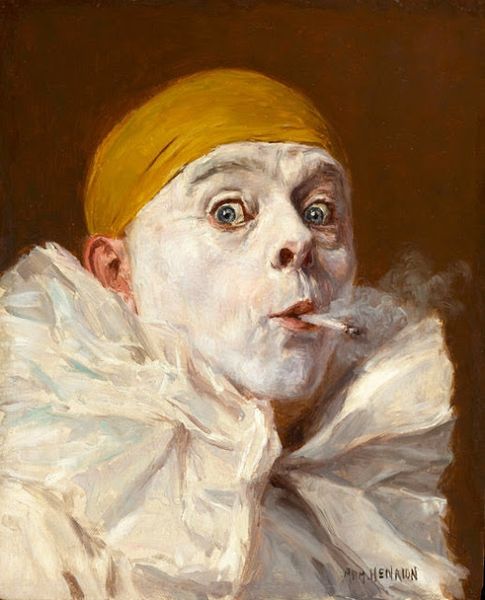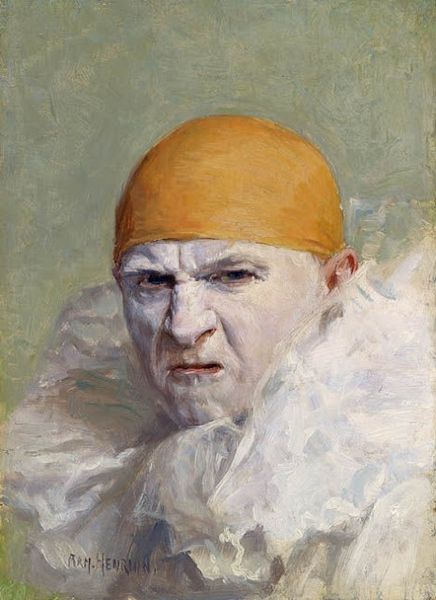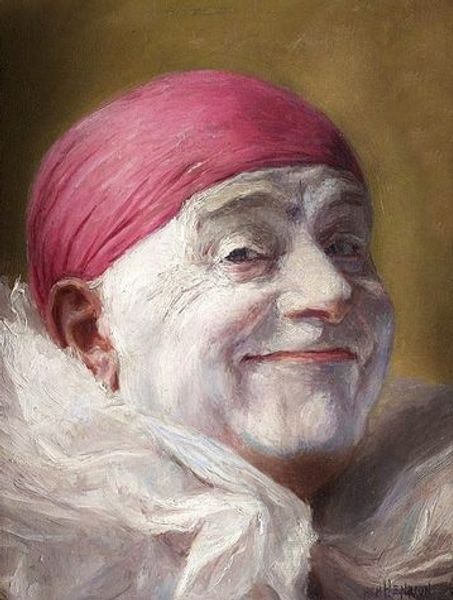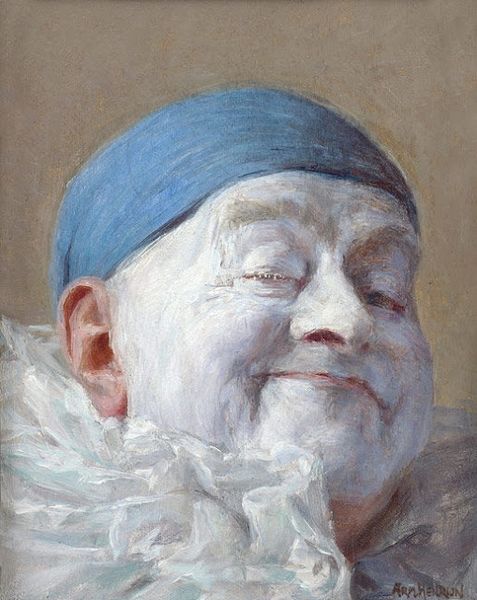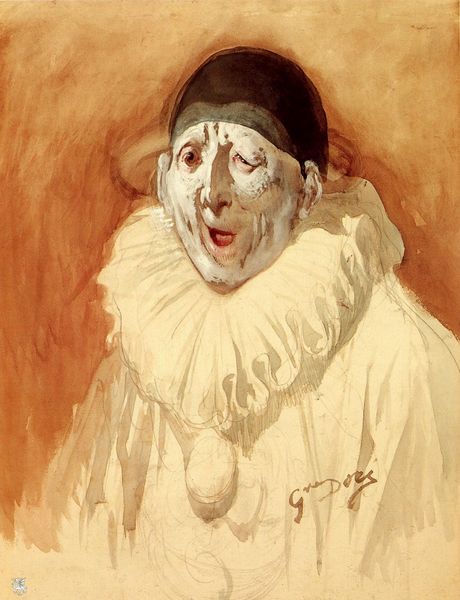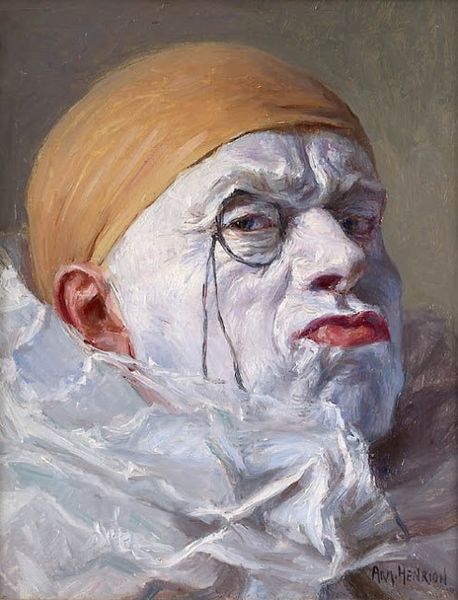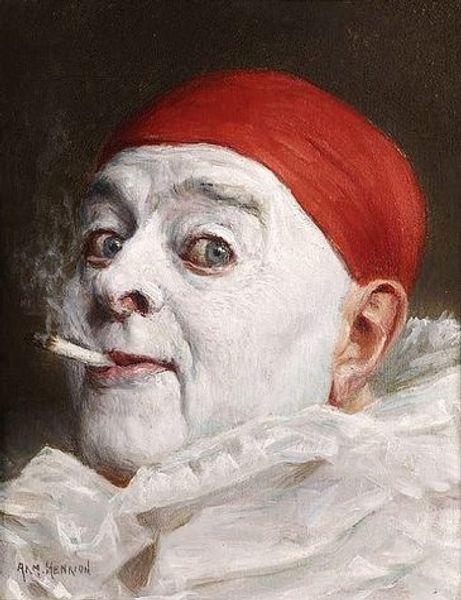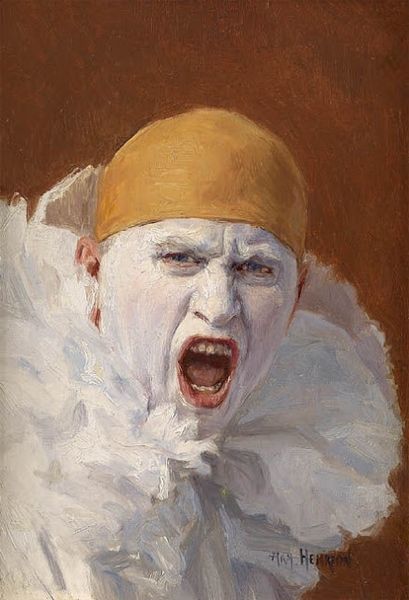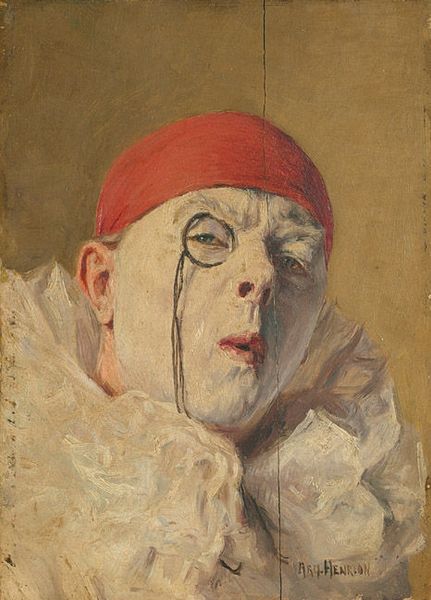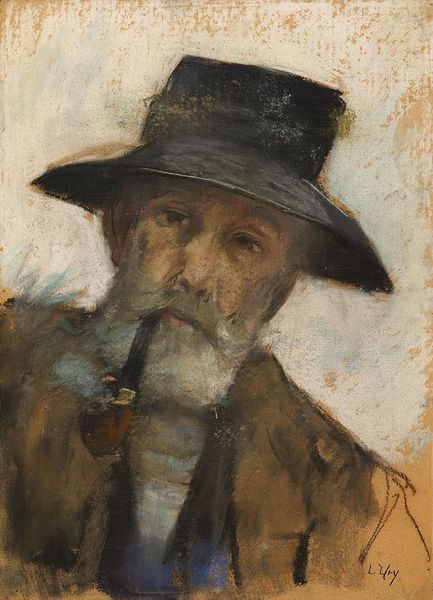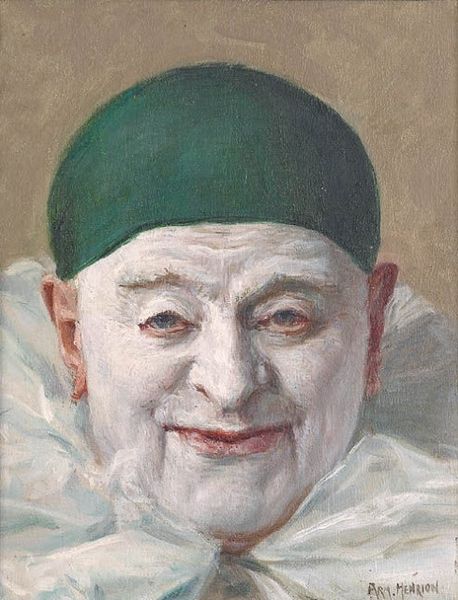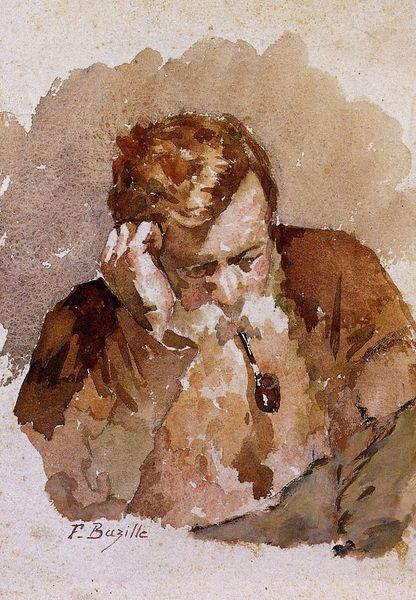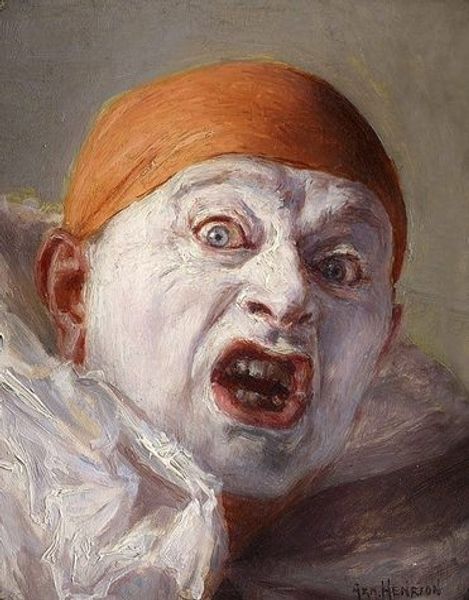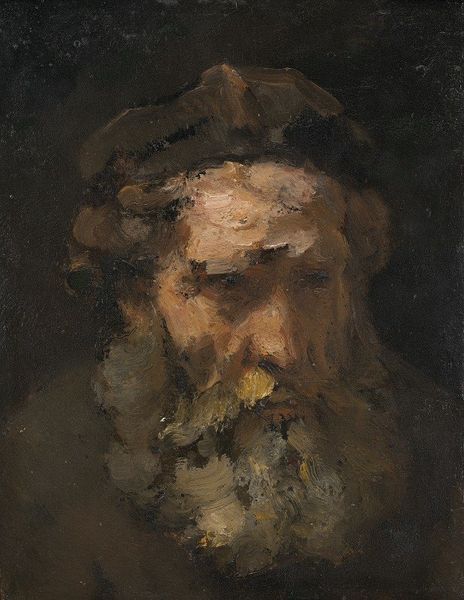
oil-paint, impasto
#
portrait
#
self-portrait
#
oil-paint
#
oil painting
#
impasto
#
realism
Copyright: Armand Henrion,Fair Use
Curator: Up next, we have Armand Henrion's self-portrait, rendered in oil with a visibly impasto technique. What are your initial thoughts on this striking piece? Editor: The materiality jumps out immediately. It is fascinating how the impasto creates such a heavy texture, giving the figure almost a sculptural presence despite the flatness of the canvas. Curator: Absolutely. It’s fascinating to consider how the artist chose to represent themself. The white face, contrasted with the orange head wrap, calls to mind various performative identities, perhaps echoing minstrelsy or clown traditions. This demands that we ask who is included, who is excluded, and for what audience this portrayal is crafted. Editor: That use of color also suggests some key contrasts in this work. There is an artificiality, almost a theatrical quality, about that palette, yet the visible brushwork, that heavy impasto you mentioned, emphasizes a physicality of making and the labour involved in artistic practice. Curator: I agree. The artist seems acutely aware of these contradictions. The cigarette, positioned centrally, becomes a signifier of working-class leisure, a detail that further complicates assumptions about class and identity that such "performances" generate. We should acknowledge how class plays a part in constructing social meaning of a work like this. Editor: Indeed. This isn’t merely about mimicking or representing; the use of the materiality challenges our consumption and pushes one to confront that artificial construction that is, to me, very arresting. Curator: The gaze also adds to the complexities of its narrative. The artist looks out, but it's an exhausted look, laden with perhaps discomfort? And what does this tell us about the process and labour the piece seeks to represent? Is this work an acknowledgement of self, but equally about performativity and perhaps its constraints? Editor: Right, these elements converge. Looking at the layers of paint, the choices, we must recognize the labor of producing the image itself. We begin to confront these layers, where artistic expression becomes a means of reflecting the production processes. It transforms our understanding of representation, leading us towards a different view of what labor encompasses, perhaps emotional or cognitive. Curator: Precisely. I come away questioning identity constructs—whose experiences are validated? The historical undercurrents can no longer be ignored. This dialogue between social reality and self-portrayal highlights complex relations. Editor: Ultimately, engaging with this piece urges one to investigate and contemplate the social and material dimensions shaping not only our visual encounters but our understanding of artistic practices themselves.
Comments
No comments
Be the first to comment and join the conversation on the ultimate creative platform.
